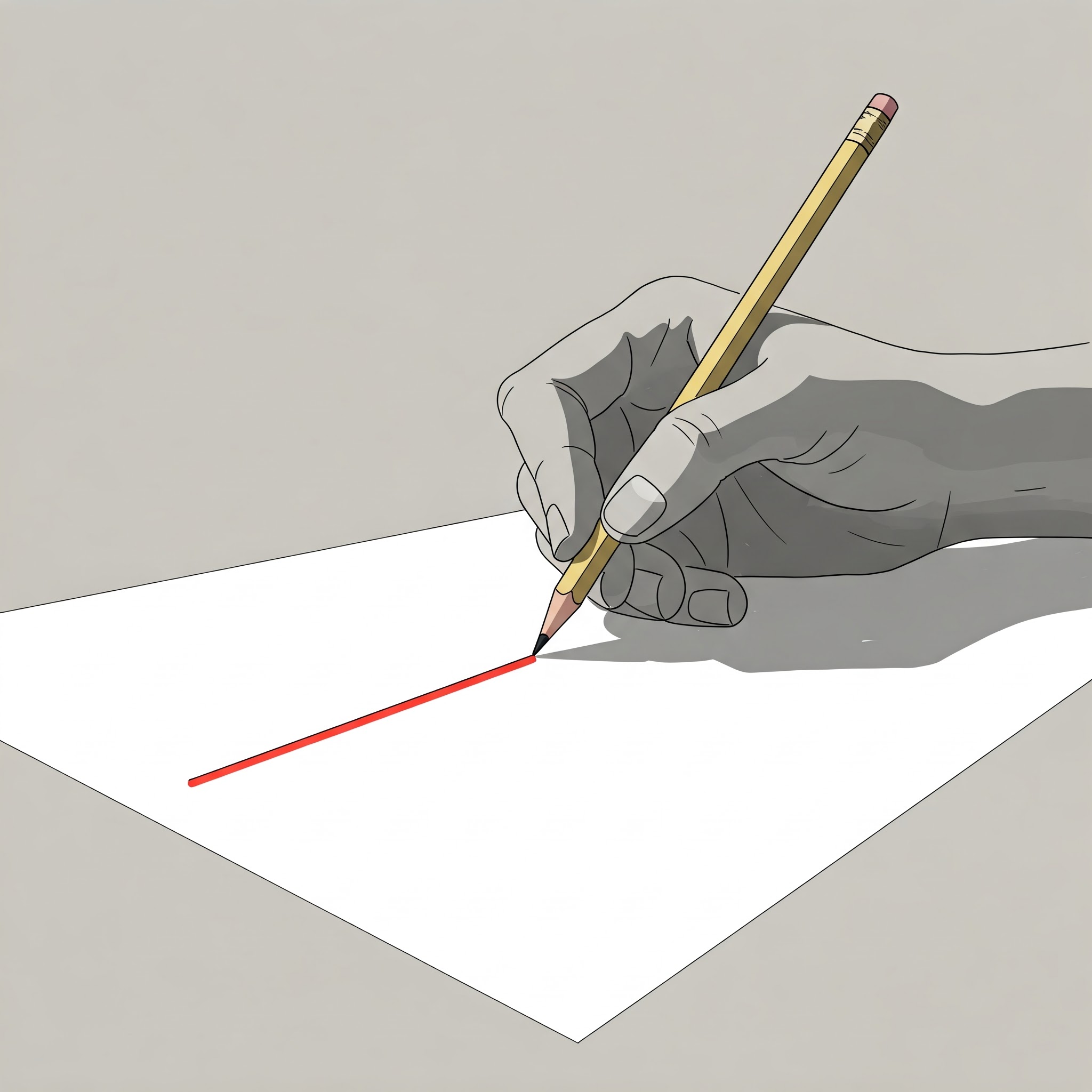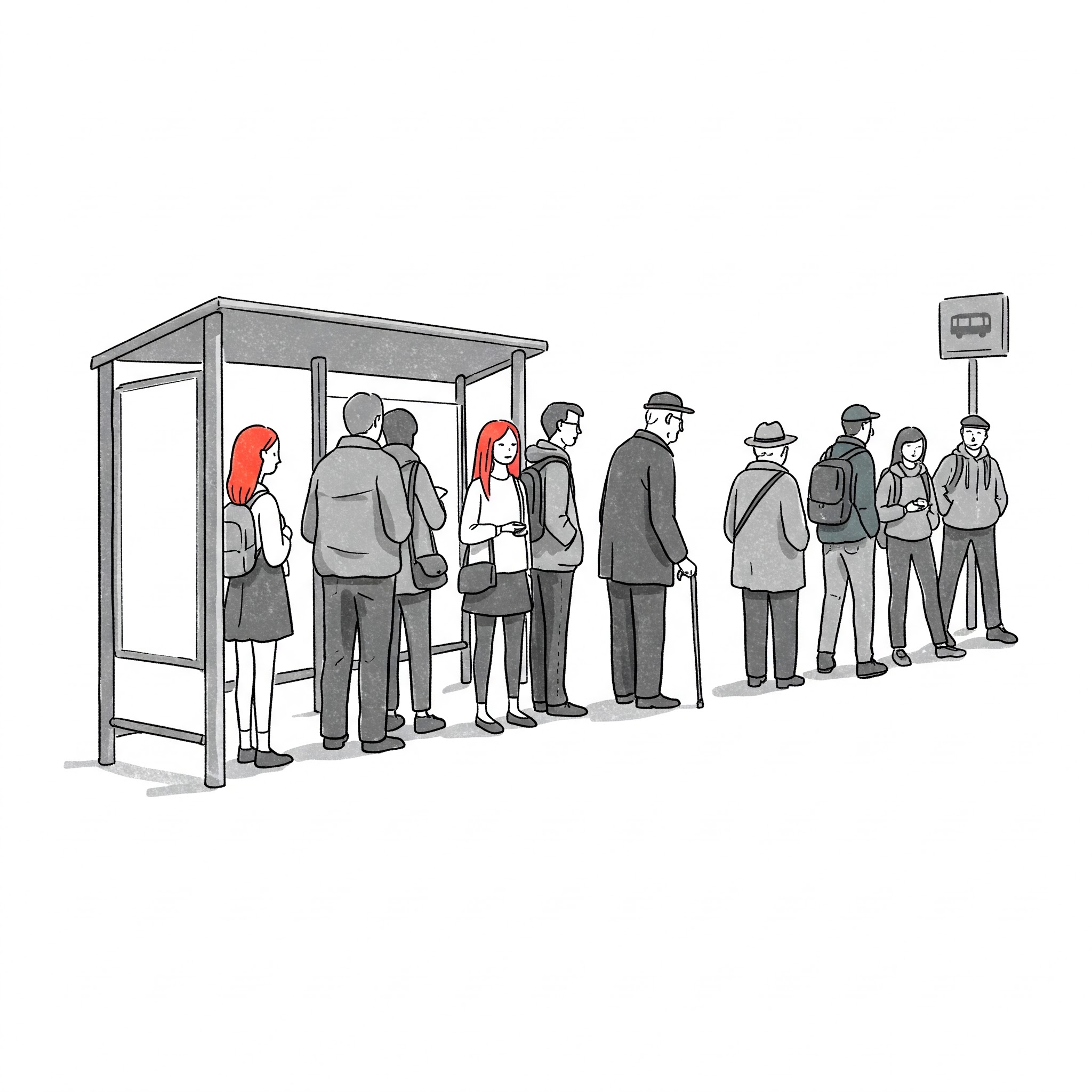Line
Definition
Line is a noun and a verb. As a noun, it refers to a long, narrow mark or band, a series of people or things, or a boundary. As a verb, it means to mark with lines, arrange in a line, or cover the inside of something.
Parts of Speech
- Noun
- Verb
Pronunciation
American English
- IPA Pronunciation: /laɪn/
- Respelling: LYN
British English
- IPA Pronunciation: /laɪn/
- Respelling: LYN
Etymology
The word "line" originates from Middle English "line," derived from Old English "līn," meaning "rope" or "cord," which comes from the Latin "līnea," meaning "string, line, or thread," from "līnum" (flax).
Derivatives
- Liner (noun)
- Alignment (noun)
- Underline (verb)
- Inline (adjective)
- Streamline (verb)
Synonyms
- Stripe
- Row
- Boundary
Antonyms
- None
Usage
The term "line" is widely used in various contexts such as geometry, transportation, and art. For example, "Draw a straight line across the page," or "There was a long line at the ticket counter."
Related Terms
- Queue: A line of people or vehicles.
- Border: A boundary line.
- String: A thin, flexible piece of material.
Detailed Definitions
Noun
- A long, narrow mark or band: Refers to a continuous mark on a surface.
- Example: "He drew a line on the paper."
- A series of people or things arranged in a row: Indicates alignment or sequence.
- Example: "The line for the bus was very long."
- A boundary or division: Refers to a defining or limiting marker.
- Example: "The river forms the line between the two states."
Verb
- To mark with lines: Refers to creating long, narrow marks.
- Example: "She lined the margins of the page."
- To arrange in a line: Indicates positioning in a straight or orderly formation.
- Example: "The students were lined up for the assembly."
- To cover the inside of something: Describes the act of lining or layering a surface.
- Example: "He lined the drawer with paper."
line



🇨🇳 Mandarin (普通话)
- 线 (xiàn) (A straight mark or boundary)
- IPA: /ɕjɛn˥˩/
- Respelling: shyen
- 队列 (duìliè) (A row or queue)
- IPA: /tweɪ̯˥˩ ljɛ˥˩/
- Respelling: dway-lyeh
🇮🇳 Hindi (हिन्दी)
- रेखा (rekha) (A straight mark or boundary)
- IPA: /ˈreː.kʰɑː/
- Respelling: reh-khaa
- कतार (katar) (A row or queue)
- IPA: /kəˈt̪ɑːɾ/
- Respelling: ka-taar
🇪🇸 Spanish (español)
- línea (A straight mark or boundary)
- IPA: /ˈli.ne.a/
- Respelling: LEE-neh-ah
- fila (A row or queue)
- IPA: /ˈfi.la/
- Respelling: FEE-lah
🇫🇷 French (français)
- ligne (A straight mark or boundary)
- IPA: /liɲ/
- Respelling: LEEN-yuh
- file (A row or queue)
- IPA: /fil/
- Respelling: FEEL
🇸🇦 Arabic (العربية الفصحى)
- خط (khaṭṭ) (A straight mark or boundary)
- IPA: /xɑtˤ/
- Respelling: khaht
- صف (ṣaff) (A row or queue)
- IPA: /sˤɑfː/
- Respelling: saff
🇧🇩 Bengali (বাংলা)
- রেখা (rekha) (A straight mark or boundary)
- IPA: /ˈre.kʰa/
- Respelling: reh-kha
- সারি (sari) (A row or queue)
- IPA: /ˈʃa.ɾi/
- Respelling: sa-ree
🇷🇺 Russian (русский язык)
- линия (liniya) (A straight mark or boundary)
- IPA: /ˈlʲi.nʲɪ.jə/
- Respelling: LEE-nee-ya
- очередь (ochered') (A row or queue)
- IPA: /ˈo.t͡ɕɪ.rʲɪtʲ/
- Respelling: OH-che-reet'
🇵🇹 Portuguese (PORTUGUÊS)
- linha (A straight mark or boundary)
- IPA: /ˈli.ɲɐ/
- Respelling: LEE-nya
- fila (A row or queue)
- IPA: /ˈfi.lɐ/
- Respelling: FEE-lah
🇮🇩 Indonesian (bahasa Indonesia)
- garis (A straight mark or boundary)
- IPA: /ˈɡa.ris/
- Respelling: GAH-ris
- antrian (A row or queue)
- IPA: /ʔanˈtɾi.an/
- Respelling: an-TREE-an
🇩🇪 German (Deutsch)
- Linie (A straight mark or boundary)
- IPA: /ˈliː.ni.ə/
- Respelling: LEE-nee-uh
- Reihe (A row or queue)
- IPA: /ˈʁaɪ̯.ə/
- Respelling: RYE-uh
🇯🇵 Japanese (日本語)
- 線 (sen) (A straight mark or boundary)
- IPA: /seɴ/
- Respelling: sen
- 列 (retsu) (A row or queue)
- IPA: /ɾet͡sɯ/
- Respelling: re-tsu
🇻🇳 Vietnamese (Tiếng Việt)
- đường (A straight mark or boundary)
- IPA: /ɗɨəŋ˨˩/
- Respelling: duong
- hàng (A row or queue)
- IPA: /haːŋ˧˨/
- Respelling: hang
🇰🇷 Korean (한국어)
- 선 (seon) (A straight mark or boundary)
- IPA: /sʌn/
- Respelling: sun
- 줄 (jul) (A row or queue)
- IPA: /t͡ɕul/
- Respelling: jool
🇹🇷 Turkish (Türkçe)
- çizgi (A straight mark or boundary)
- IPA: /t͡ʃiz.ɡi/
- Respelling: CHEEZ-gee
- sıra (A row or queue)
- IPA: /sɯ.ˈɾa/
- Respelling: suh-RAH
🇵🇰 Urdu (اردو)
- لکیر (lakir) (A straight mark or boundary)
- IPA: /lʌˈkiːr/
- Respelling: la-KEER
- قطار (qatar) (A row or queue)
- IPA: /qʌˈt̪ɑːr/
- Respelling: ka-TAR





